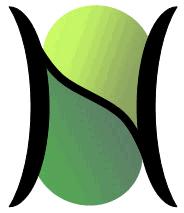Side-by-side animations of the same 8-frame 2-segment moving arm snippet. On the left we show same input pattern playing at every level to show the portions of the input image that fall within the bottom-up receptive field (RF) of each mac at each level. However, just because an active pixel occurs in a given mac's RF, that does not mean it "seen" by the mac and remembered. Only pixels that fall with the RFs of active (red-borders) macs are "seen" by the mac above. A mac is active if the number of active features in its bottom-up RF is within a lower and upper bound. Here the lower and upper bound for V1 (first internal level) macs are both set at 4 pixels. The lower and upper bounds for higher macs (V2 and V3) are 1 and 4 respectively. But for macs at V2 and higher, these bounds are expressed in units of features, where each active afferent mac in the level below represents the presence of one feature. Accordingly, the righthand animation shows only the portions (pixels) of the input that are actually "seen" by each mac at each level. Thus, although a relatively rich spatiotemporal pattern of a moving arm is presented to the model, the memory traces recorded in the higher-level macs actually represent somewhat (and sometimes very) abbreviated versions of that input pattern. In fact, on the second frame, only one V1 mac meets the criterion number of active pixels; thus, only that 4-pixel portion of the input gets encoded in the higher level macs. (Download AVI version if desired).
